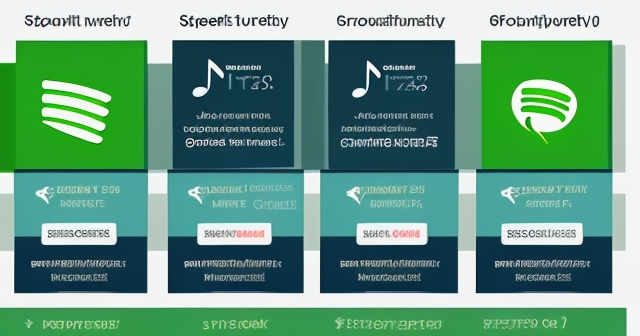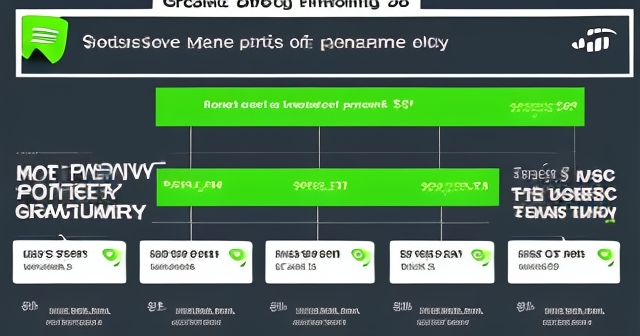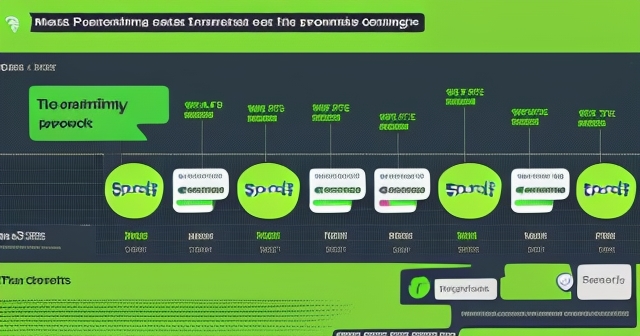Spotify’s Path to Profitability: Analyzing the Data Behind the Turnaround
For years, a persistent question echoed across the financial markets: Would Spotify, the global leader in music streaming, ever truly become profitable? After prioritizing aggressive user acquisition and market dominance for over a decade, the company often posted significant losses, fueling skepticism among investors and analysts alike. You may have wondered yourself, seeing the massive scale but questioning the underlying economics.
Well, the narrative has decisively shifted. Spotify has not only demonstrated its capacity for profitability but has officially turned a corner. The company achieved its first full year of net profit in 2024, a landmark moment that validated its evolving business model and strategic adjustments. This wasn’t a fluke; recent performance, particularly in Q1 2025, has reinforced this new trajectory, showcasing robust growth alongside improving financial health.
In this analysis, we’ll delve deep into the financial data and strategic maneuvers that have propelled Spotify into this profitable phase. We’ll break down the key metrics, explore the drivers of revenue growth and margin expansion, examine cost management efforts, and consider the future outlook. By the end, you’ll have a clearer understanding of how Spotify is aiming to balance its massive scale with sustainable financial success.

The achievement of net profit for the full fiscal year 2024 marked a pivotal moment for Spotify. For context, think about building a massive skyscraper. For years, the focus was on laying the foundation, erecting the steel structure, and getting as many floors built as possible – prioritizing sheer scale and presence. Profitability often seemed like a distant goal, secondary to securing the largest possible footprint in the global streaming market.
This approach, while successful in making Spotify the undisputed leader in user numbers, came at a significant cost. Investing heavily in R&D, international expansion, marketing, and navigating complex royalty agreements with rightsholders meant the bottom line was consistently in the red. The question “Will Spotify ever be profitable?” wasn’t just academic; it was a fundamental concern for anyone evaluating the company’s long-term viability as a public entity.
Achieving net profit in 2024 signaled a shift in maturity. It demonstrated that the foundational work had reached a point where the business model could support financial success. This wasn’t merely about growing bigger; it was about growing *smarter*, finding ways to monetize the massive user base more effectively and manage the inherent costs of the streaming ecosystem. It moved the company from a pure growth story to one balancing growth with demonstrable financial health, a crucial transition for attracting and retaining different types of investors.
Q1 2025 Performance: Recent Data Reinforcing the Trend
Following the landmark year of 2024, the Q1 2025 results provided crucial evidence that the profitability trend is continuing. Let’s look at the numbers reported:
- Total Revenue: Spotify reported total revenue of €4.19 billion, representing a robust +15% increase year-over-year (YoY) on a constant currency basis. This indicates strong underlying business momentum, excluding the impact of currency fluctuations.
- Operating Income: The company posted a record quarterly operating income of €509 million. This figure is significant, showing strong operational performance before interest and taxes.
- Net Profit: Spotify reported a net profit of €225 million for the quarter. This confirms that the positive operating performance is translating into profitability at the bottom line after accounting for all financial factors.
These figures painted a picture of a business not just growing revenue but doing so efficiently enough to generate substantial operating and net profit. It validated the strategic decisions made in the preceding periods.
However, you might notice a detail here: while operating income was a record, the reported figure (€509 million) actually missed the company’s own guidance. Why the miss amidst such strong overall results? This leads us to an interesting financial nuance.

Navigating Short-Term Noise: The Impact of Stock-Based Compensation and Payroll Taxes
One of the specific factors impacting Q1 2025 operating income was a significant expense related to payroll taxes, amounting to €76 million. This isn’t a typical operating cost increasing due to business operations; rather, it’s directly tied to the appreciation of Spotify’s stock price.
Here’s the simplified explanation: when employees or executives receive stock-based compensation (like stock options or restricted stock units), companies often incur tax liabilities related to the value of that stock when it vests or is exercised. When the company’s stock performs exceptionally well, as Spotify’s has since late 2022, the value of this compensation increases, triggering higher associated payroll taxes or social charges in certain jurisdictions (like some European countries).
Think of it like this: Imagine you promise someone a bonus tied to the value of your house. If your house value suddenly jumps significantly, the tax you owe on that bonus might also jump unexpectedly. For Spotify, the strong stock performance, a positive signal for the business and its shareholders, paradoxically created a temporary headwind on the operating income statement due to this specific tax mechanism.
While this €76 million expense caused operating income to fall below guidance, it doesn’t fundamentally change the narrative of underlying profitability. It’s a short-term “noise” factor linked to a long-term positive development (stock appreciation and employee compensation plans), rather than an indicator of deteriorating operational efficiency or core business weakness. Understanding this nuance is crucial when dissecting the earnings report beyond the headline numbers.
The Engine: Robust Subscriber Growth and Market Scale
At the heart of Spotify’s business model remains its massive user base. Profitability is being achieved not *instead* of growth, but *because* of sustainable growth combined with strategic monetization. The Q1 2025 results highlighted continued strength in this area:
- Premium Subscribers: Reached 268 million, up an impressive +12% YoY. Crucially, this figure exceeded both internal company guidance and external analyst estimates for net additions during the quarter.
- Monthly Active Users (MAUs): Grew to 678 million, a +10% increase YoY, also surpassing company guidance and analyst forecasts.
Why is this continued growth so vital, even as the focus shifts to profitability? A massive user base provides several strategic advantages:
- Scale: It allows fixed costs (like platform development and certain overheads) to be spread across more users, improving operating leverage.
- Negotiating Power: A larger user base gives Spotify more leverage in negotiations with record labels, publishers, and other rightsholders, potentially leading to more favorable royalty agreements over time.
- Network Effects: While less pronounced than in social media, a larger platform attracts more creators (artists, podcasters), which in turn attracts more users, creating a virtuous cycle.
- Data Insights: A vast user base provides immense data on listening habits, which can be used to improve recommendations (enhancing stickiness) and develop new features (like AI playlists or Discovery Mode).

Think of the user base as the foundation and structure of our skyscraper analogy. You need a vast, stable structure before you can add the profitable elements like high-rent offices or luxury apartments.
Geographic Growth Engines: Powering Long-Term Expansion
While growth is happening globally, specific regions are contributing disproportionately to subscriber additions and are key to Spotify’s long-term expansion strategy. The Q1 2025 report highlighted strong performance in:
- Latin America: This region continues to be a significant driver of both MAU and Premium subscriber growth.
- Asia-Pacific: Another powerhouse for user acquisition across both tiers.
- Europe and Rest of World: Also showed solid growth in Premium subscribers, demonstrating continued penetration in more mature or developing markets outside the primary growth engines.
Investing in these high-growth potential regions, even if average revenue per user (ARPU) is lower initially compared to more mature markets like North America or Europe, is critical for securing future scale. As these markets mature and the populations’ purchasing power potentially increases, there’s significant runway for ARPU growth and sustained subscriber additions.
This geographic focus allows Spotify to tap into vast new audiences, ensuring that the engine of user growth continues to fuel the business even as core markets become saturated. It’s a long-term play that provides the necessary scale for the profitability strategies we’ll discuss next.

Strategic Levers for Margin Expansion: Making More Per Stream
User growth is essential, but it’s not sufficient for profitability if the cost of serving each user remains too high relative to the revenue generated. A key part of Spotify’s turnaround story involves strategic initiatives aimed at improving Gross Margin – the revenue left over after paying content costs (primarily royalties) and certain operational expenses directly tied to delivering the service.
Spotify has historically faced challenges with its gross margins due to the structure of royalty payments to rightsholders (labels, publishers, artists). These payments often represent a large percentage of revenue. To improve profitability, Spotify needed to find ways to either increase revenue per user *without* a proportional increase in royalty costs or find alternative revenue streams with better margins.
Several strategies are contributing to this margin expansion:
| Strategy | Description |
|---|---|
| Price Increases | Implemented price increases in various markets to retain a larger portion of incremental revenue. |
| Bundled Subscriptions | Strategic deals with major labels to offer bundled subscriptions that enhance margins. |
| Discovery Mode | A program where artists can promote tracks while lowering associated royalties. |
These strategies demonstrate a shift from simply accepting the industry’s traditional royalty structure to actively negotiating and innovating within that structure to retain more revenue. It’s like our skyscraper owner finding ways to offer bundled services (office space + gym access) or using specific features (premium views) to justify higher prices and keep more of the money after covering basic building costs.
Taming Costs: Operating Expenses Under Control
While increasing revenue and improving gross margins are crucial, managing operating expenses is equally vital for achieving and sustaining profitability. In the past, Spotify’s expenses often soared as it invested heavily in expansion, R&D (including ambitious projects like podcasting and hardware), and marketing.
The Q1 2025 results showed positive progress on this front: Operating expenses declined 3% year-over-year. This indicates that cost control efforts are taking hold. Initiatives like layoffs implemented in previous periods, streamlining operations, and focusing R&D investments more strategically are contributing to this decline.
Effectively managing operating expenses ensures that the improvements made at the gross margin level flow down to the operating income and net profit lines. It shows financial discipline complementing revenue growth. It’s the skyscraper owner managing administrative costs, maintenance fees, and marketing budgets efficiently so that the high rent from tenants translates into healthy profit, not just high revenue.
Building Value and Stickiness Beyond Music: The Role of Podcasting, Video, and AI
Spotify’s investments in content beyond music, such as podcasts, video podcasts, and audiobooks, have sometimes been misunderstood as simply an attempt to diversify revenue away from music. However, a key strategic rationale, particularly from a profitability perspective, is their contribution to user engagement, stickiness, and retention.
When users spend more time on the platform listening to various types of content, they become more deeply integrated into the Spotify ecosystem. Discovering a favorite podcast or engaging with video content alongside their music strengthens their connection to the service. This increased engagement leads to higher platform “stickiness” – users are less likely to leave.

For a subscription business, high stickiness translates directly into lower churn rates (the rate at which subscribers cancel their subscriptions). Lower churn is fundamental to sustainable profitability because acquiring a new subscriber is significantly more expensive than retaining an existing one. By making the platform a more comprehensive audio (and increasingly, video) destination, Spotify makes its Premium subscription more valuable to users, justifying the cost and increasing their willingness to stay, even when prices increase.
Similarly, investments in AI features, such as personalized recommendations and AI-powered playlists (like the AI DJ), further enhance the user experience. These features leverage data to make the service feel more tailored and indispensable, boosting engagement and stickiness.
These non-music initiatives are less about immediate, high-margin direct revenue streams (though ad revenue from podcasts is a growing factor) and more about strengthening the core value proposition of the Premium subscription. They help secure the foundation of profitable growth by keeping the user base engaged and loyal.
The CEO’s Confident Outlook and Strategic Direction
Amidst the positive results and the occasional financial nuance like the payroll tax impact, CEO Daniel Ek has expressed strong confidence in Spotify’s current trajectory and long-term strategy. His perspective is crucial as it provides insight into the company’s priorities and expectations.
Ek has emphasized the importance of the freemium model not just as an acquisition tool but as a core component of the platform’s value proposition that drives long-term retention. By offering a compelling free tier, Spotify builds a massive funnel that eventually converts users to Premium, while also retaining a large audience for its ad-supported business. The stickiness built through features like diverse content types and AI enhances this retention loop.
Despite acknowledging potential short-term market “noise” or macroeconomic uncertainties that could impact areas like ad pricing, the confidence in the underlying strategy – balancing user growth with strategic margin expansion and cost control – remains high. The focus appears to be on continuing to execute on these levers while innovating to keep the platform essential for both users and creators.
What’s Next? Q2 Guidance and Future Trajectory
Looking ahead, Spotify’s Q2 2025 guidance provides some insight into the expected near-term performance. The company forecasts continued user growth and anticipates revenue of €4.3 billion.
However, the guidance for operating income (€539 million) suggests that the impact of factors like ongoing payroll taxes linked to stock price appreciation could persist, potentially causing the figure to fall below some analyst estimates once again. This reinforces the idea that while the underlying profitability trend is established, short-term financial reporting can still be influenced by specific, sometimes non-operational, items.
For you as an investor or trader, understanding these factors is key. It means looking beyond headline numbers to assess the core operational performance and the strategic levers the company is pulling. Continued growth in Premium subscribers, further gains in ARPU through price increases and bundling, ongoing cost discipline, and successful integration of non-music content for engagement will be crucial metrics to monitor.
The question “Will Spotify ever be profitable?” seems to have been answered. The focus now shifts to “Can Spotify sustain and grow its profitability?”
Conclusion: Spotify’s Profitable Turn is Real
Spotify has undeniably entered a new phase, moving from a pure growth-at-all-costs model to one demonstrating sustainable profitability. The journey, marked by years of investment and market skepticism, culminated in its first full year of net profit in 2024, reinforced by strong Q1 2025 performance.
This turnaround isn’t accidental. It’s the result of a multi-faceted strategy: leveraging massive and still-growing global user scale (especially in regions like Latin America and Asia-Pacific), implementing strategic price increases, successfully negotiating deals that enable margin-enhancing opportunities like bundled subscriptions and Discovery Mode, and maintaining discipline in operating expense management.
Furthermore, investments in non-music content and AI are playing a vital role in securing the user base by boosting engagement and reducing churn – a critical factor for the long-term financial health of a subscription service. While short-term factors like stock price-linked payroll taxes can introduce volatility in reported numbers, the underlying operational trends point towards a business increasingly capable of translating its market dominance into financial success.
For you, whether you are an investor or simply interested in the economics of digital platforms, Spotify’s profitable turn offers a compelling case study. It demonstrates that even in challenging, royalty-heavy industries, scale combined with strategic innovation and financial discipline can pave the way for sustainable profitability. The question is no longer ‘if’, but ‘how much’ and ‘how consistently’ Spotify can now deliver on its profitable potential.
will spotify ever be profitableFAQ
Q:What factors contributed to Spotify’s profitability in 2024?
A:Spotify’s profitability was achieved through strategic subscriber growth, pricing increases, and improved cost management initiatives.
Q:How does Spotify maintain user engagement beyond music?
A:Spotify enhances user engagement through podcasts, video content, and AI features that provide personalized experiences.
Q:What are the key challenges Spotify faces in sustaining profitability?
A:Challenges include managing royalty costs, payroll taxes related to stock compensation, and competitive pressures in the music streaming industry.

留言